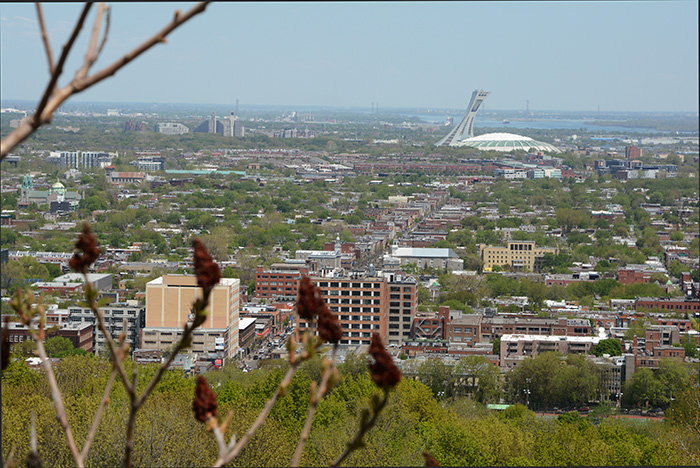Few students are lucky enough to go to class next door to a sprawling patch of urban green space. Despite being one of Montreal’s most interesting landmarks, Mount Royal often fades into the background for many McGill students, serving as nothing more than a backdrop of pretty scenery. It’s easy to take Mount Royal’s proximity for granted during the bustle of our daily lives—it’s only a large bump in the landscape, after all. Yet, the mountain is deeply embroiled in Montreal’s history, and one doesn’t need to look too far into the park to see physical evidence of this connection. For those seeking relief from a stressful midterm season, or even just looking to get to know the city on a deeper level, a couple hours of exploration in Mount Royal Park should be atop one’s list of priorities. There are secrets of great interest buried within the mountain—hidden in graveyards, hiking trails, and even in the trees themselves—that are definitely worth investigating.
Unmarked paths, hidden lookouts
Chemin Olmstead is the main path that circles up the mountain to its summit. Often overrun with joggers and tourists, it isn’t the most ideal route if one is looking for a peaceful scenic hike. Luckily, many unmarked small and winding paths lead out from Olmstead into more isolated hiking trails. One route leads east from the Mont Royal Chalet at the summit and circles the perimeter of Mount Royal, offering a unique and secluded vantage point from which to view the city. Some spots along the trail open up into rocky cliffs that serve as organically formed lookouts. The views from these hidden gems are more interesting than the curated cityscapes seen at the chalet—particularly because they’re completely isolated from crowds. Along with being a photographer’s paradise, these hidden nooks are an ideal place to explore on a first date or with an old friend.
Century-old cemetery
Opened in 1852, Montreal's largest cemetery is located right next to Mount Royal Park, past Côte-des-Neiges, near the summit of the hill. The natural landscape of the cemetery is possibly the most beautiful on the island, with near 360-degree views of the city and its surroundings at the summit of the hill. Some may find exploring a graveyard to be unsettling, yet there is definitely something unique and autumnal about the image of old stone monuments set against orange foliage. Many graves in this cemetery date back over 100 years and contain former Canadian prime ministers, soldiers, and members of the Molson family—Canada's beer-brewing dynasty. More interestingly, however, is that the cemetery is also home to the grave of McGill student Jocelyn Gordon Whitehead, who was famously responsible for the death of Harry Houdini via sucker punch in 1926. The cemetary, easily accessible by Chemin Olmstead, is an ideal place to escape from the fast-paced downtown environment and interact with Montreal’s history.
Time capsule
A giant cross monument on top of Mount Royal was erected by the city's founder, Paul Chomedey de Maisonneuve, in 1643, and was later replaced by an illuminated replica in 1924. Next to it is a plaque marking the burial spot of a time capsule from the year 1992. Back at the time of its burial, around 12,000 Montreal school children wrote messages and drawings of their visions of what the city would look like in 150 years—as the capsule is scheduled to be opened in 2142, when the city will celebrate its 500th birthday. The historical significance of this site is eye-opening for students both native to Montreal and from elsewhere, providing them with the opportunity to learn more about the history of the city.
Morality Cuts
The majority of the trees planted in Mount Royal Park are actually not very old. In fact, many of them date back no further than 50 years. This is largely due to the mass decimation of the mountain's vegetation during Mayor Jean Drapeau's term in the 1950s. At this time, the lush foliage we've come to be familiar with was nowhere to be seen, and the large hill looming over the city was covered in stumps, rather than healthy trees. Drapeau was convinced that the thick, dense foliage covering the mountain made it a breeding ground for “un-holy” sexual behaviour. In order to curb the “abuse” of the mountain's forest cover, he ordered Mount Royal to be stripped clean of its trees. The decision was controversial, and the trees were soon replaced with young saplings—many of which have grown into those we see in Montreal's landscape today.
[metaslider id=47994]






